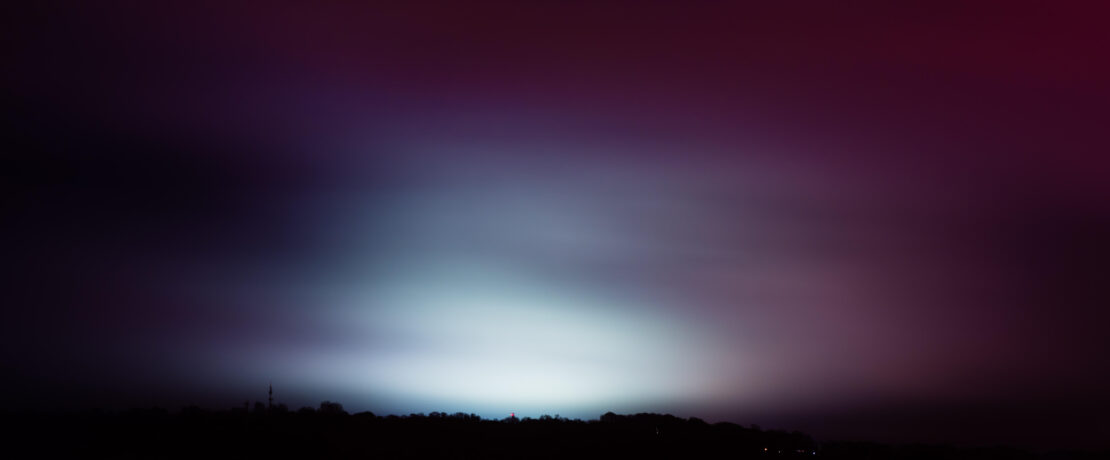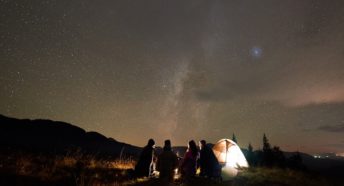What is light pollution, and how can you take action about it?
Our view of the stars is a source of amazement for scientists and casual observers, and helps millions of us connect to nature. However, light pollution can affect people’s experience of the night sky. So what is light pollution? And what does the law say about it?
It’s a sad fact that many children will grow up never seeing the Milky Way, our own galaxy, because of the impact of artificial light.
Light pollution is a generic term meaning artificial light which shines where it is neither wanted nor needed. In broad terms, there are three types of light pollution:
- Skyglow – the pink or orange glow we see for miles around towns and cities. It spreads deep into the countryside, caused by a scattering of artificial light by airborne dust and water droplets.
- Glare – the uncomfortable brightness of a light source.
- Light intrusion – light spilling beyond the boundary of the property on which a light is located, sometimes shining through windows and curtains.
There is increasing awareness of the impact that light pollution can have on wildlife. It interrupts natural rhythms including migration, reproduction and feeding patterns. Man-made light causes confusion to migrating birds, often with fatal outcomes, and many of us have heard birds singing late into the night in trees lit by a streetlight.
A survey by CPRE found that light pollution can cause a great deal of distress to humans too. This includes disrupted sleep, and in some cases has driven people to move house.. Recent studies suggest that exposure to light at night can disrupt the body’s production of melatonin, a brain hormone best known for its daily role in resetting the body’s biological clock.
Lighting and the law
In 2010, CPRE and the British Astronomical Association’s Commission for Dark Skies ran a survey to find out how people’s lives are affected by light pollution. Almost 1,400 people took part and the survey revealed that the main causes of light nuisance are:
- Road lighting (89%)
- Domestic security lighting (79%)
- Street lights that are more than five years old (77%)
- Businesses (56%)
- Sports grounds (53%)
- Supermarkets (41%)
Almost two-thirds of the light pollution came from a source with an established lighting scheme (65%) such as a development that has been in place for some time. A total 82% of respondents said that the offending lights were left on all night.
In many cases there is something that can be done. The first UK law tackling light pollution came into force in 2006 under Section 102 of the Clean Neighbourhoods and Environment Act (2005). Exterior lighting joins noise and smells on the list of things that can be treated as a ‘Statutory Nuisance’. Your local council’s Environmental Health Department can take legal action against this, because it’s a criminal offense for exterior light to be ‘prejudicial to health or a nuisance’.
This law doesn’t tackle all forms of light pollution, only incidents of particularly bad lighting from premises which cause people real nuisance. But CPRE would like to see it used, to raise awareness of the issue and to help people who really are suffering from severe light pollution.
Find out more about how to tackle nuisance lighting.
How to tackle nuisance lighting
Domestic security lighting
The Commission for Dark Skies has a useful guide on how to tackle nuisance lighting – including commercial and security lighting. You can read the guide here.
Street lighting
If nearby street lighting is shining in to your home at night and causing you distress, you can get in touch with your local council’s street lighting department. Just give them a call, explain the problem and ask what they can do to help. You can find the contact details of your local lighting department through your local council’s website, and you can find your local council here. The council will have several possible solutions available to tackle your problem, including:
- Installing shields to the streetlights (a common solution, although some councils charge for this service)
- Replacing the light fitting
- Installing dimming technology (an expensive option that would apply to an area instead of an individual light and could ultimately save the council money)
Developers and businesses
Would you like to take action to reduce light pollution caused by existing lighting used by your business? Or perhaps you want to ensure that new developments have well designed lighting schemes? We recommend that you refer to the Institution of Lighting Professionals guidance for the reduction of obtrusive light.
Our work on dark skies
We’re campaigning for stronger national and local policies to tackle light pollution and improve the night sky – for people and wildlife. You can read more about our work on dark skies here, and while you’re here, why not check out our interactive map of Britain’s night skies? If you share our view that everyone should have access to truly dark skies, please consider joining us or making a donation.





